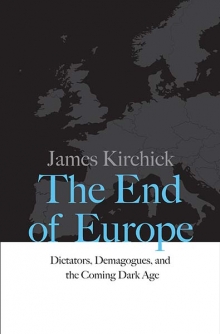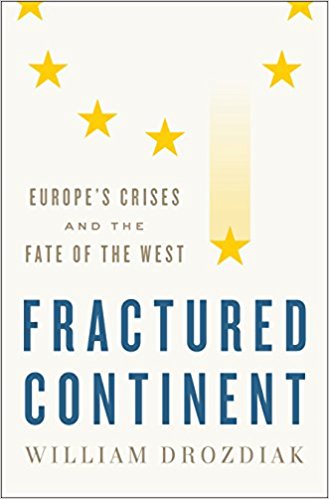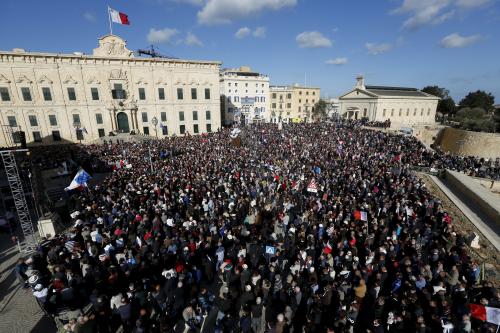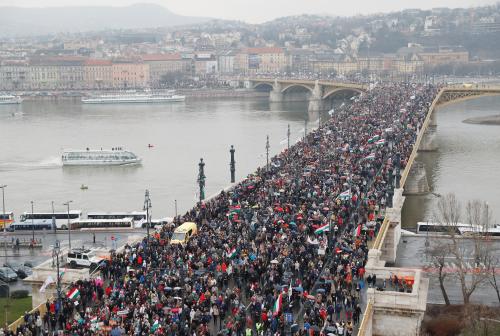In Freedom Square, Viktor Orbán is waging war in concrete and in bronze over Hungary’s past – and for its future.
Freedom Square (Hungarian: Szabadság Tér) is an eclectic patchwork of memorials and monuments to different periods of contemporary Hungarian history. Within this small plaza just a stone’s throw away from the iconic Budapest parliament building stand testaments to Hungary’s last 100 years — a century whose narrative continues to be hotly contested by Hungarians to this day.
One of those Hungarians who wishes to contest that narrative is Viktor Orbán, the country’s current prime minister. As George Orwell once wrote: “Who controls the past, controls the future [and] who controls the present controls the past” — a message that has clearly not been lost on Orbán. Orbán and his conservative Fidesz Party have, since his landslide 2010 election, been systemically overhauling Hungarian politics towards an authoritarian illiberalism. And alongside these sweeping governmental changes, Orbán has also embarked on an insidious mission to revise Hungary’s history in order to suit his current political needs.
In one outrageous example, Orbán has decided that the leader of the failed 1956 Hungarian Revolution against Soviet domination, former Prime Minister Imre Nagy, ought to be forgotten. Ironically, Nagy was once a figure whom a young Orbán extolled as “the last responsible Hungarian leader” in a career-launching 1989 speech. There, Orbán denounced the hypocrisy of politicians who “now rush to touch the coffins [of revolutionaries like Nagy] as if they were charms of good luck” despite having once “made us study from books that falsified the revolution.”
But with the decision this past year from the Fidesz-led National Memorial Commission to relocate a statue of Imre Nagy from its place in Freedom Square to a less central location near the Danube River, Orbán has himself become the falsifier. The firm in charge of the square’s reconstruction has justified the act by stating that the aim is to recreate the pre-1945 Soviet occupation appearance of the space, while Orbán’s critics have replied that this only erases the reality of the occupation. Paradoxically, other critics have argued that, given Orbán’s ties to Russian President Vladimir Putin, who has expressed personal regrets over Soviet Union’s collapse, the decision may in part be motivated by a desire to appear pro-Russia.
The exact thinking is murky but the result is indisputable: Residents of Budapest woke up one morning just before New Year’s to find that the beloved statue, created in 1996 by artist Tamás Varga, was no longer there. The bronze life-sized figure of Nagy, which had for 23 years rested his forearms on the railing of a bridge, back turned to the monument to the Red Army, gaze focused pensively towards parliament, had disappeared overnight.
The memorial’s original placement between the monument to the Red Army and the parliament building was more than a matter of available physical space: It was a reflection of Nagy’s identity as a pro-reform socialist who sought to “bridge the gap” between Hungary’s past and future by ending hardline communist rule. Nagy led the grassroots movement to topple the Soviet puppet regime in 1956 and briefly served as prime minister of the new government, promising democratic reforms and an end to the fighting. However, the revolt, which lasted just 12 days from October to November 1956, was crushed by Soviet tanks. The Soviet government was reinstated, and Nagy was hanged two years later in a secret execution and buried face-down in an unmarked grave. His legacy as a national hero was only established in 1989 after the fall of Soviet rule in Hungary, with the statue to commemorate his legacy erected in Freedom Square in 1996.
The statue’s former location was thus not just an aesthetic choice but a symbolic one: He looked away from fascism and totalitarianism and towards democratic governance. The removal of Nagy from Freedom Square physically erases from the center of Hungarian civic life that nation’s long history of civil resistance, spontaneous civil society action, and struggle for democracy. All are deeply threatening to the illiberal Orbán regime.
Nagy is just one of many Orbán-led erasures. Other victims include the 1956 Institute, the historical research center studying Hungary’s communist period which was recently absorbed by Orbán’s partisan Veritas Institute and Archive; Hungary’s role in deporting Jews to Nazi death camps, which has been obscured in the new Freedom Square Memorial to Victims of German Occupation that depicts all of Hungary as a victim; and Central European University, the dual Hungarian and American-accredited university that was forced to relocate to Austria after it failed to meet Orbán’s new higher education laws. School textbooks have even been affected: Hungarian students now learn that Hungary’s legacy is as a culturally homogenous country, where “it can be problematic for different cultures to coexist.”
The Nagy memorial is today relegated to a less central location at Jászai Mari Square on a footpath near Margaret Bridge. But even Orbán could not get rid of it altogether. And there may be a hopeful lesson in that. If Nagy’s historical legacy was able to come back from the margins in 1989, perhaps it can do so again. If a bronze statue can be relocated, then it can always put back in place. Orbán’s Fidesz party has just sustained a significant electoral loss in the Budapest mayoral elections. Experience reminds us that illiberalism is not permanent. Administrations and policies can be changed, and history can always be revealed again to better illuminate the past —and, as Orwell reminds us, the future.
The Brookings Institution is committed to quality, independence, and impact.
We are supported by a diverse array of funders. In line with our values and policies, each Brookings publication represents the sole views of its author(s).








Commentary
History in the (un)making: Historical revisionism in Viktor Orbán’s Hungary
November 25, 2019